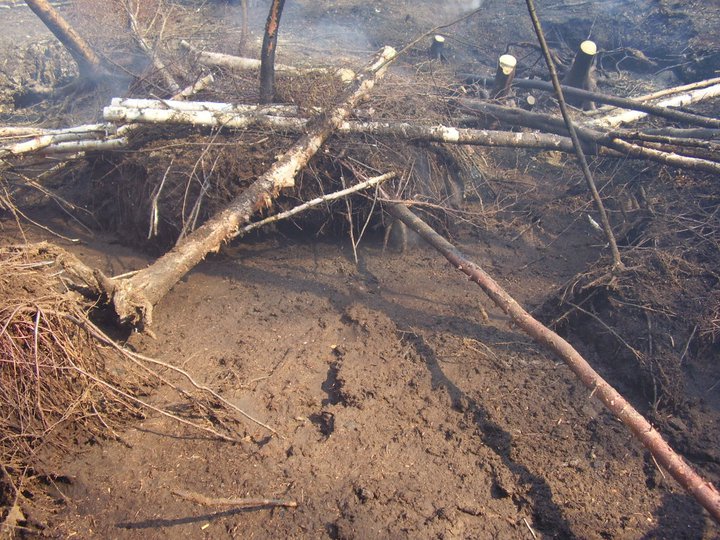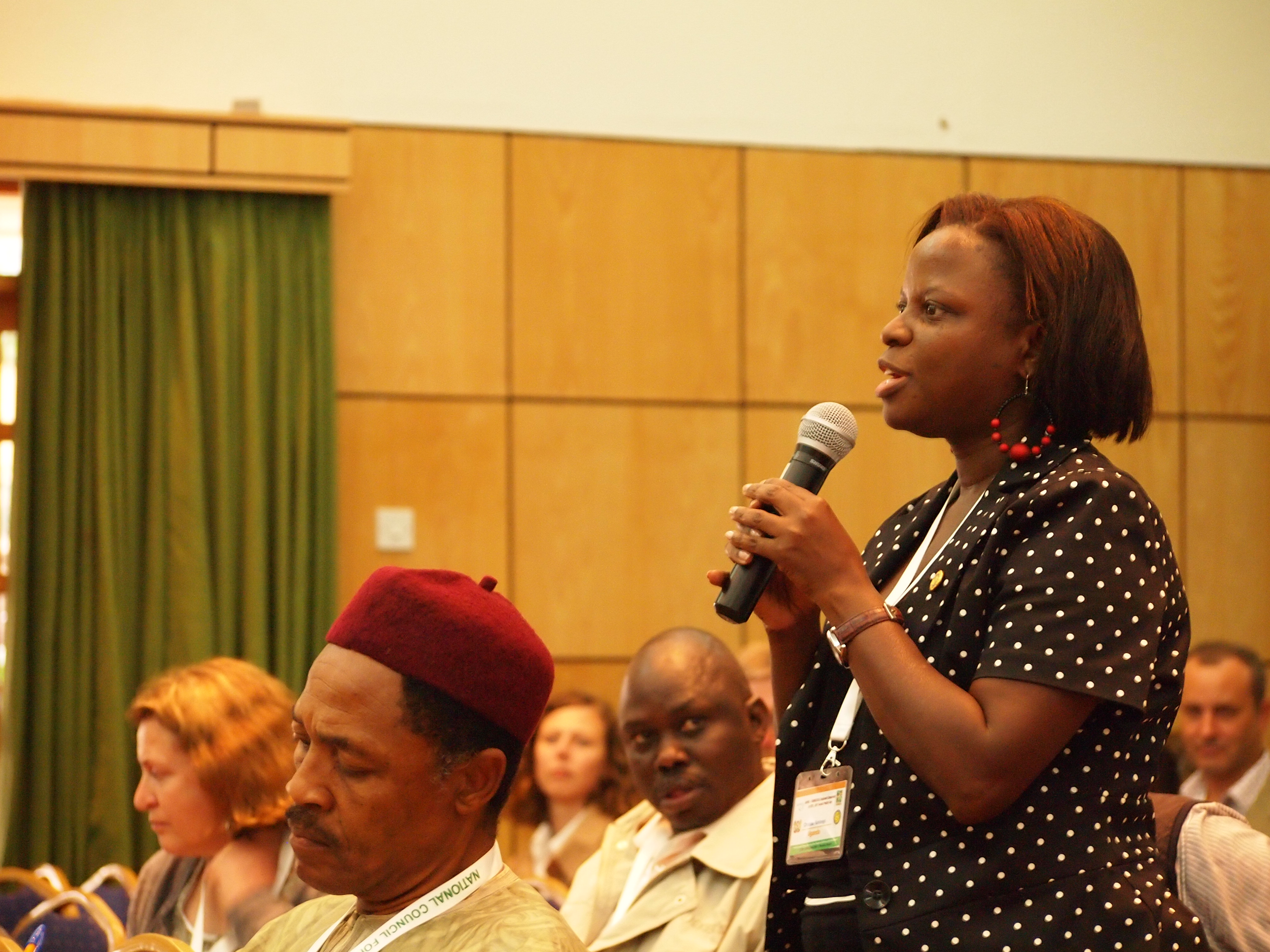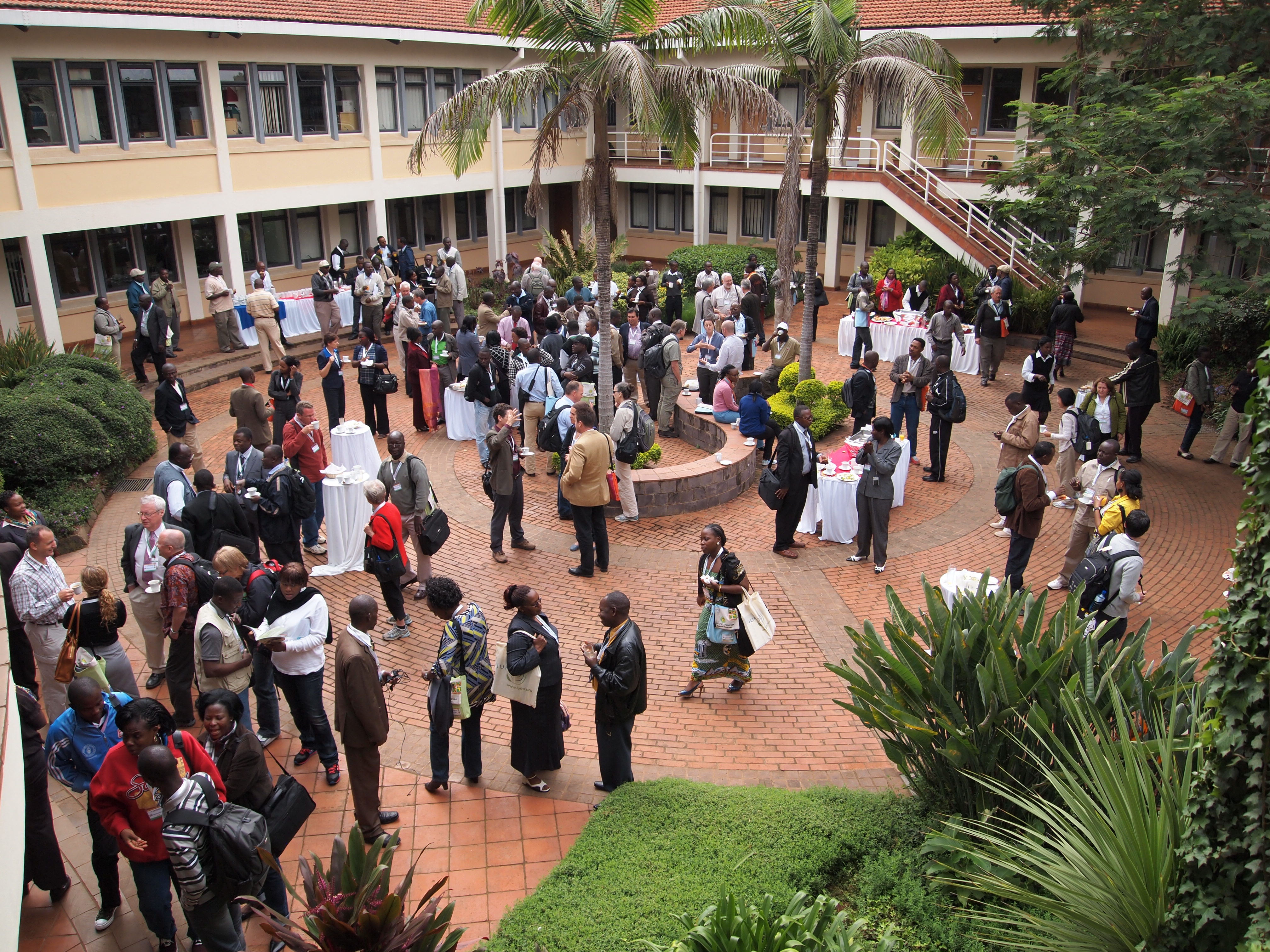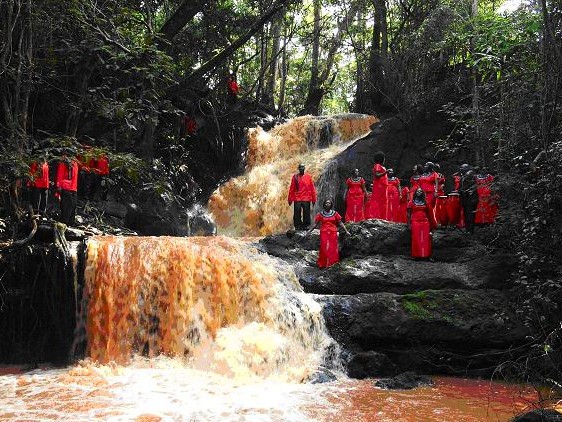IUFRO Spotlight #11 – Power, discrimination and gender equality
Power, discrimination and gender equality
By Tuija Sievänen (Finnish Forest Research Institute),
Coordinator of IUFRO Division 6 – Social Aspects of Forests and Forestry
A new publication takes a long, hard look at – and dispels some of the myths about – the issue of gender equality as it relates to development and environmental governance of the forests.
The author, Seema Arora-Jonsson of the Swedish University of Agricultural Sciences and Coordinator of the IUFRO Working Party dealing with gender research in forestry, focuses on groups in India, which is widely recognized as a highly gender-biased country and in Sweden, a country seen as highly gender-equal. Read more…
Understanding Relationships between Biodiversity, Carbon, Forests and People: The Key to Achieving REDD+ Objectives
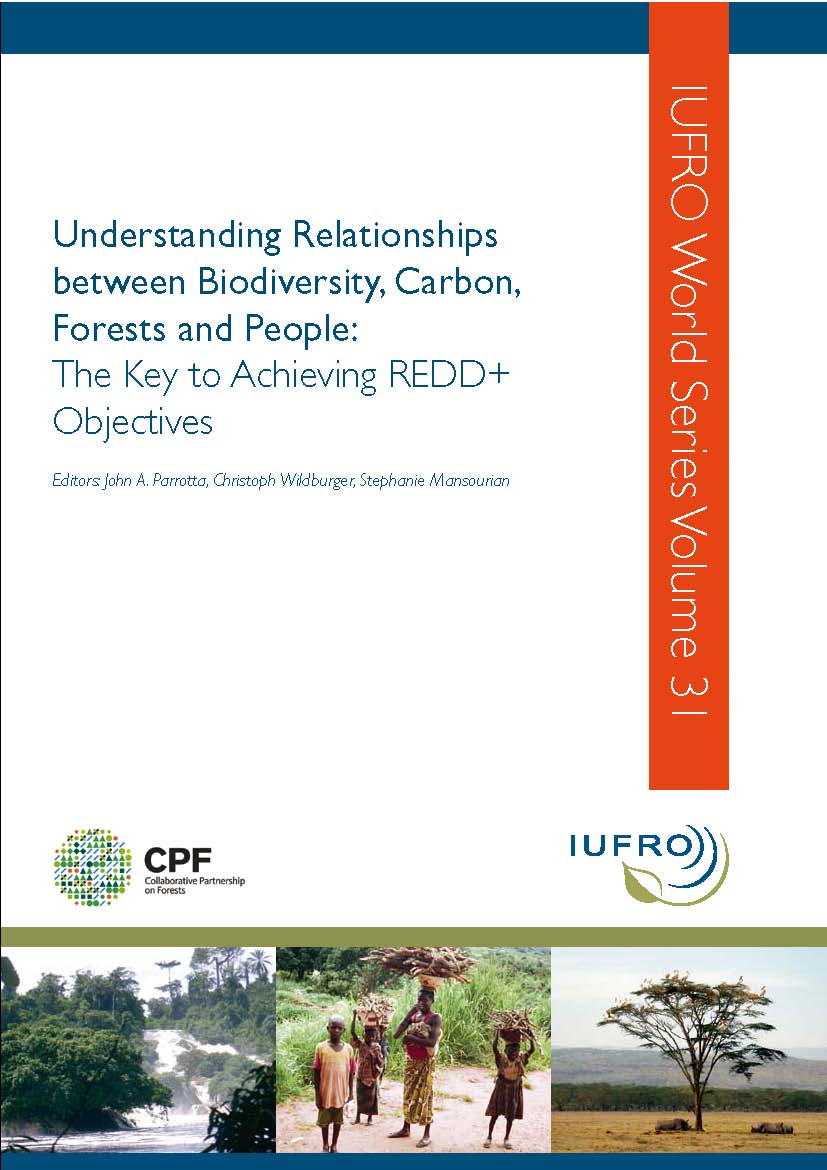 New GFEP assessment report published as IUFRO World Series 31
New GFEP assessment report published as IUFRO World Series 31
Edited by: John A. Parrotta, Christoph Wildburger, Stephanie Mansourian
Forests harbour a major proportion of the world’s terrestrial biodiversity and provide a wide range of vitally important ecosystem services – including carbon sequestration and storage. Deforestation and forest degradation continue to erode biodiversity and the capacity of forest ecosystems to help mitigate climate change and provide the goods and services that sustain livelihoods and human well-being locally, and globally. Reducing greenhouse gas emissions from deforestation and forest degradation, and enhancing forest carbon stocks in developing countries (REDD+) is a proposed mechanism which has the potential to realise its primary objective – climate change mitigation – with variable impacts, positive and negative, on biodiversity, forests and people. REDD+ is complex, its proposed activities and implementation mechanisms not yet clearly defined, and therefore surrounded by uncertainty. Because of its high relevance to climate change mitigation, the conservation and sustainable use of forests and their biological diversity, the Expert Panel on Biodiversity, Forest Management and REDD+ was established by the Collaborative Partnership on Forests in December 2011 to carry out this assessment.
The Expert Panel included 24 scientists and other experts from a variety of biophysical and social science disciplines relevant to the topics covered in this assessment report. An additional 18 contributing authors added their expertise to the assessment. Each chapter was prepared by a team of Lead Authors and Contributing Authors led by one or more Coordinating Lead Authors. A full draft of the report and its individual chapters was peer-reviewed prior to its completion. The results of this voluntary collaboration between January and October 2012 are presented in the six inter-related chapters comprising this book.
This assessment report evaluates the implications of forest and land management interventions envisaged under REDD+ in a multidimensional and integrated fashion. It summarises the most current scientific literature that sheds light on the relationships between forest biodiversity and carbon (and other ecosystem services), how these complex relationships may be affected by management activities implemented to achieve REDD+ objectives, the potential synergies and tradeoffs between and among environmental and socio-economic objectives, and their relationship to governance issues. Based on the main findings of the assessment (summarised in Chapter 6), a policy brief entitled ‘REDD+, Biodiversity and People: Opportunities and Risks’ has been prepared especially for policy- and decision-makers.
The full report is formally presented at Forest Day 6 on 2 December during the United Nations Framework Convention on Climate Change (UNFCCC) meeting in Doha, Qatar (26 November-7 December, 2012).
The report, the policy brief and a press release – New Study Suggests Global Pacts Like REDD Ignore Primary Causes of Destruction of Forests – are available for download.
Report and Policy Brief: http://www.iufro.org/science/gfep/biodiv-forman-redd-panel/report/
Press Release: http://www.iufro.org/science/gfep/media-information/gfep-bfmr-assessment-press-release/
For more information about the Expert Panel on Biodiversity, Forest Management and REDD+, please visit:
http://www.iufro.org/science/gfep/biodiv-forman-redd-panel/
IUFRO Spotlight #10 – For Peat’s Sake
For Peat’s Sake
By Björn Hånell, Coordinator, IUFRO Division 1 (SLU, Sweden), and
Jean-Michel Carnus, Coordinator, IUFRO Division 8 (INRA, France)
Forest fires are a persistent and growing problem around the world. While fire certainly produces some ecological benefits, those are arguably being outweighed by the increasing frequency, size and intensity of fires as the planet warms.
In a given year, forest and grassland fires can be extensive – burning 350- 450 million ha (an area larger than India); expensive – costing many billions of dollars to combat (in Canada alone fire management costs can reach $800 million a year); and lethal – a recent study attributed almost 340,000 deaths annually to respiratory and other causes related to the impact of forest/bush fires.
Making the situation more worrisome are predictions that these fire events could triple in the next 50-75 years.
A recent Canadian Forest Service bulletin: Peatland Fires and Carbon Emissions (Frontline Express 50 http://cfs.nrcan.gc.ca/publications?id=33351) noted that some fire researchers from Canada, the U.S. and Russia – where fire in those countries’ boreal forests is a significant activity – have begun looking more closely into boreal peatlands.
Peatland ecosystems cover only 2-3% of the earth’s land surface, but in the boreal they make up 20-30% of the forest region and average 20-30% of the area burned annually.
Those peatlands store an estimated 30% of the world’s terrestrial carbon – some 300 billion metric tons. Typically they are fairly wet areas, but when they dry and burn – usually in severe drought years or from some drainage activities – they have the potential to flip from carbon sink to carbon source as they release huge amounts of greenhouse gases.
How significant are the emissions from peatland fires? In 1997 in Indonesia peatland fires released the equivalent of 20-40% of all annual global fossil fuel emissions. And Indonesia’s peatlands are dwarfed by the peatland reserves in Canada, Alaska and Russia.
Peatland fires tend to produce a lot of smoke and can be difficult to extinguish. In the north they can continue to smoulder stubbornly beneath the winter snow and then burst into flame again in a subsequent year.
Smoke, as noted above, also makes human health a major consideration in peatland fires. Smoke is toxic to begin with, but peatlands contain about 15 times as much mercury – a serious toxin – as nearby upland forests. The mercury-laden smoke can travel far. Recently in Russia, smog permeated Moscow from peat fires many kilometers distant and, within the last few months, air quality advisories were being issued in parts of British Columbia on Canada’s west coast as smoke from Siberian peat fires pushed ozone levels to neverbefore- seen numbers.
While quite a bit is known about the function and behavior of fire in the boreal forest, much of the research there has been on upland forest areas. By comparison, much less is known about the vulnerability of boreal peatlands to fire.
One of the key areas being investigated in the boreal peatlands is focused on developing a peat moisture code. By getting a better handle on peatlands moisture content, researchers will know the potential for burning, when it might occur and how deep it will burn. That will help preparation and mitigation efforts.
A report by J.M Waddington (McMaster Centre for Climate Change, McMaster University) and colleagues suggests that such a code can be developed – with modifications to adapt to specific peat types and issues – within the framework of the existing Canadian Forest Fire Weather Index (FWI) System.
The FWI System (or portions of it) has been adopted – with adaptations for local conditions – by several countries as a fire management tool: New Zealand, Fiji, Portugal, Spain and several U.S. states, among them.
There are six components to the FWI System. Three are fire behavior indices – related to rate of fire spread; available fuel; and frontal fire intensity.
The other three components, those most germane to this topic, relate to fuel moisture. They are numeric ratings of the moisture content of litter and other fine fuels; the average moisture content of loosely compacted organic layers; and the average moisture of deep, compact organic layers.
The ratings give indications of factors ranging from ease of ignition and flammability of fine fuel, to the amount of smoldering in deep duff layers and large logs.
IUCN Campaign – Plant a Pledge
IUCN has launched a campaign, « Plant a Pledge » , and is asking readers to sign the petition at www.plantapledge.com. It takes just a minute of your time!
IUCN is hoping that you will help the campaign by reaching out as widely as possible, by helping to promote the campaign through your networks, through publicising it through the web, social media, presentations and word of mouth.
Plant a Pledge – www.plantapledge.com – is an opportunity for the global public to tell world leaders and land owners that they support the goal to restore 150 million hectares of degraded and deforested lands by the year 2020. The goal is an implementation vehicle for achieving CBD Aichi Target 15 and has become known as the “Bonn Challenge” after it was launched in Bonn, Germany, in September 2011.
The Bonn Challenge target to restore 150 million hectares by 2020 came second when over 1 million people took part in the on-line public Rio Dialogue vote for the most important global recommendation during the recent UN summit in Brazil, “Rio+20”.
Restoring 150 million hectares would inject billions of new dollars into economies every year, and would significantly help mitigate climate change, boost biodiversity and reduce poverty.
The Plant a Pledge petition will gather the signatures from people across the globe, and will be personally delivered by our Ambassador Bianca Jagger to senior delegates at an upcoming high level international meeting, urging land owners and governments to dedicate land to landscape restoration.
Help gather enough signatures to really turn the heads of those leaders and convince them to commit to the Bonn Challenge.
The website www.plantapledge.com will give you lots more information on the campaign and on forest landscape restoration.
Please go there now and sign the petition and urge all your friends, contacts and networks to do the same, by forwarding this message, and ideally also by sharing it through other means.
If you have time to explore the site, you might like to watch the videos, explore the interactive restoration globe, read the case studies and learn more about the issue and the campaign.
Other things you can do to support this important campaign are:
– follow the campaign on twitter: http://twitter.com/PlantAPledge
– ‘like’ the campaign on facebook: http://www.facebook.com/plantapledge
– Tell all your friends, colleagues and networks and ask them to sign, too!
Thank you for your support!
Summer Students at IUFRO Headquarters
During 4 weeks in July, three young students worked at IUFRO Headquarters to get a taste of work in an office. Here is their report:
When you work for IUFRO, you have to be prepared for a wide range of different tasks such as setting up a filing system, sorting notes or getting the mail. One of the most exciting assignments we got was to prepare a draft on how to improve and reorganize the IUFRO webpage according to our own vision. The three of us put together our ideas and debated how the webpage could be changed in order to be more attractive to users not familiar with IUFRO, and still be easy for all users to operate with.
IUFRO Headquarters is a very nice place to work at. While there is a lot of work to be done, the atmosphere is pleasant and relaxed. Everyone is very cooperative and helpful. In our work, we did not have to worry about time pressure, but were encouraged to finish all our tasks properly.
Since the members of IUFRO Headquarters were very busy with their usual tasks, such as doing the finances, organizing meetings, writing reports or minutes, they were highly pleased that we took over extra tasks for them and so facilitated their work.
We learned much: not only about the work of IUFRO and its member organizations, but also about the functioning and logistics of a big association, like IUFRO, and its headquarters. The time here at IUFRO was a highly informative and instructive, as we learned to work within a group, but at the same time independently. And we now have an idea what it is like to work in an office of an international association.
Jonathan Kleine, Julian Koch, Moritz Wildburger
Photo: IUFRO Headquarters
IUFRO Spotlight #9 – Self Interest Can Conserve Forests
Self Interest Can Conserve Forests
By Daniela Kleinschmit (Swedish University of Agricultural Sciences, Department of Forest Products), Coordinator of IUFRO Division 9 Forest Policy and Economics
Legality verification – “Certification Lite”, so to speak – may offer the impetus for a workable system of responsible, sustainable global forest governance that previous efforts have been unable to accomplish. That’s one of several hypotheses put forward in a paper by Benjamin Cashore and Michael Stone of Yale University’s School of Forestry and Environmental Studies. Read more…
The Nairobi Resolution
“Forest and Trees: Serving the People of Africa and the World” was a fitting theme for the 1st IUFRO-FORNESSA Regional Congress & ITTO/AFF Forest Policy Day held at the World Agroforestry Centre in Nairobi, Kenya June 25-29. The closing ceremony held late Friday afternoon after the last of the Scientific Sessions adjourned, brought reflections of the week and outlined the importance it had for the region and its people.
Adopted from the discussions and the sessions held throughout the week, The Nairobi Resolution was read allowed to the 350+ scientists, policymakers, and forest stakeholders in attendance at the Congress. The resolution which comes a week after the Rio+20 Sustainable Dialogue on forests reinforces the commitment of African countries to “promote science, technology, innovation and traditional knowledge in order to face forests main challenge: how to turn them productive without destroying them”.
The participants of the Congress voiced 7 commitments for the future:
- Adopt people-centred approaches for forest research and education focusing on environmental, social and economic pillars;
- Further expand the scope of forest research, training and education to address issues relevant to global sustainability including land use, livelihoods and environment issues;
- Increase information sharing and knowledge management through fostering regional cooperation and networking in African forest research and providing opportunities for scientists to contribute to global issues;
- Combine traditional knowledge with formal scientific research results to design forest and tree management systems to meet local and broader societal needs at varying spatial scales;
- Develop reward systems for successful uptake and adoption of research outputs and build impact analysis in the research project design;
- Invest in science-society communication, including the training on effective communication of research findings, to improve the impact of research for all beneficiaries and improve the link between research, policy and practice; and
- Provide effective platforms for engagement of scientists, policy makers and stakeholders through national, sub-regional and regional mechanisms.
In a region that faces many obstacles using forest and trees to meet local livelihood needs while ensuring a biodiverse and environmentally sustainable landscape the resolution outlines an optimistic future for Africa – it’s forests, it’s trees and it’s people.
Read The Nairobi Resolution in its entirety at https://www.fornis.net/content/nairobi-resolution.
PDF at http://www.iufro.org/download/file/8798/3684/regcong-africa12-congress-resolution_pdf/
Forest Congresses: Growing Expertise
The IUFRO/FORNESSA Congress brought together over 300 participants from 50 plus countries – 40 of those African. For many of the participants it was the largest gathering focused on forest issues they have ever attended. With a wealth of sessions to choose from, participants were able to interact with others doing research not only in their own area but complimentary ones as well.
With the rooms full of expertise the sessions never seemed long enough, as questions, comments and discussion were bountiful. During the panel discussion of the ITTO/AFF Forest Policy Day that ran all day June 28th, a very insightful observation was stated – the knowledge sharing which happens during these events brings the level of expertise up for individuals quicker than any other means and not only does it raise the expertise level of the individual it positively affects the collective regions level. It is only in these open forums where one gains a clear picture of what and how research is being done in neighbouring countries.
Many of the younger attendees were awed at being able to meet and share their research with foremost leaders in topics and gain valuable critique and insight that is an opportunity they would not have been granted otherwise.
Congress goers have one day remaining before they head back to their respective countries and they will be bring back a souvenir which will last a lifetime – shared knowledge and improved understanding of the issues Africa’s forests, trees and people face.
A walk in Karura Park: Day two of the IUFRO/FORNESSA Regional Congress
After a morning of sessions filled with discussions the Congress goers donned their field clothes and headed out for an afternoon in the forest.
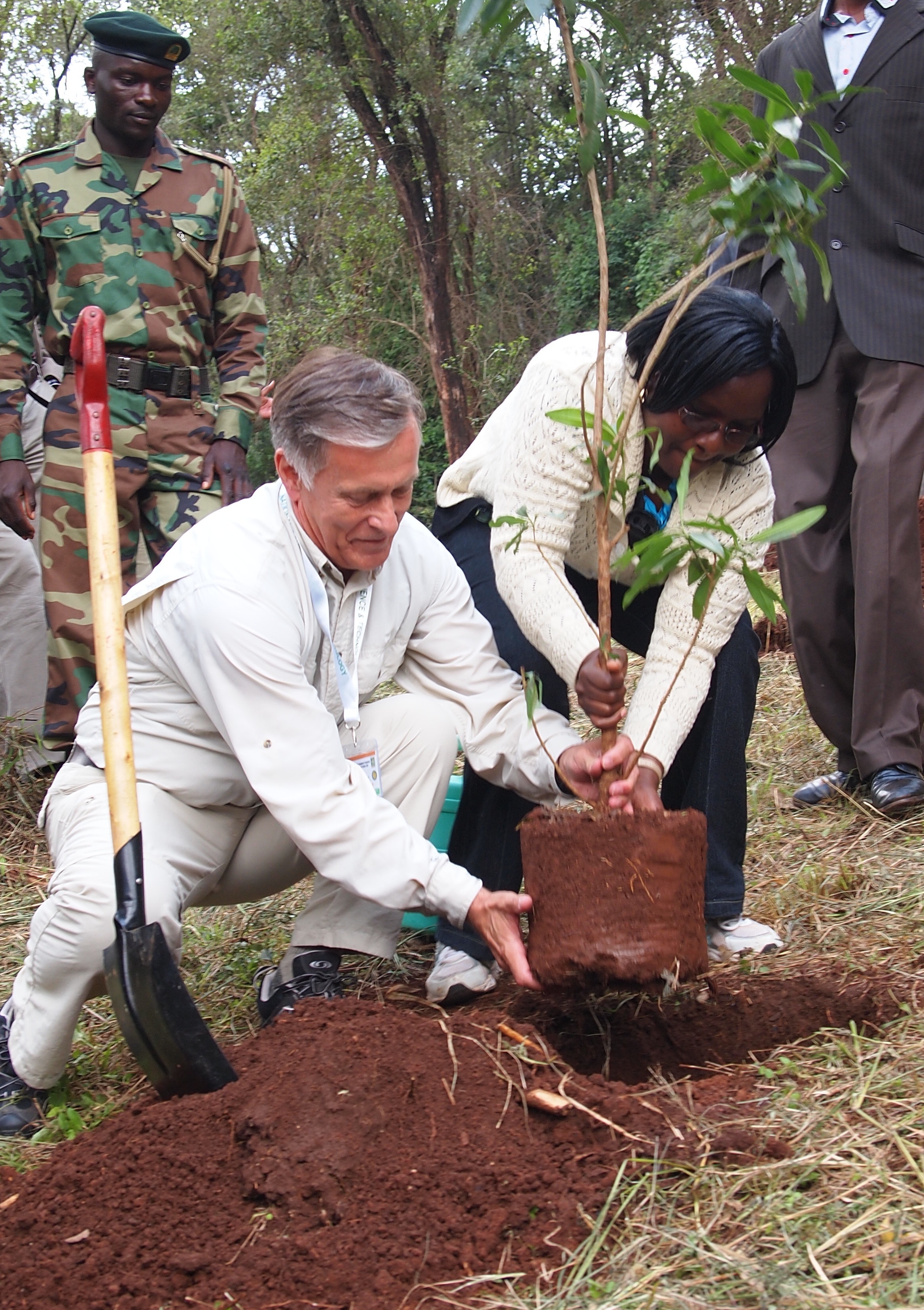
IUFRO President Niels Elers Koch and a representative from the Friends of Karura Forest plant a tree together.
Karura Forest, the renowned urban forest in Nairobi was the destination of the in-Congress tour for the participants. The forest became internationally famous and a crowning achievement for conservationists in the late 90’s. There was huge pressure to clear the forest and create housing projects and the conservation community led by the late Nobel Peace Prize Laureate Wangari Maathai carried out a large public campaign to save the forest. The forest will forever be seen as a symbol of success and serve as a reminder of what a community can do when they come together to challenge land grads.
The excursion started off with a ceremonial tree planting which saw trees being planted by FORNESSA Coordinator Joseph Cobbinah and IUFRO President Niels Elers Koch with representatives from the Friends of Karura Forest – a community forest association dedicated to protecting the urban forest.
Amidst constant conversation the excursion led the large group of participants by trail to the Mau Mau Caves. As the participants continued their hike underneath the canopy of the forest they were greeted by the growing sound of music. Following the river to the waterfall an enthusiastic Kenyan choir lining the waterfall performing a traditional song and dance greeted the excursionists.
The end of the in-Congress tour also marked the end of a successful second day. Thursday is the ITTO/AFF Forest Policy Day and will see participants change their field clothes for more formal wear and head back to sessions to continue presenting and discussing their research. In the words of John, a soil scientist from Nigeria, “Tomorrow I look forward to very much, I will get to tell everyone about my research and then they will know what we have been doing and they will learn from us.”
Additional coverage at http://www.iisd.ca/ymb/forest/iufrofornessa/c1/.
Sub-Saharan Africa Scientific Congress Commences
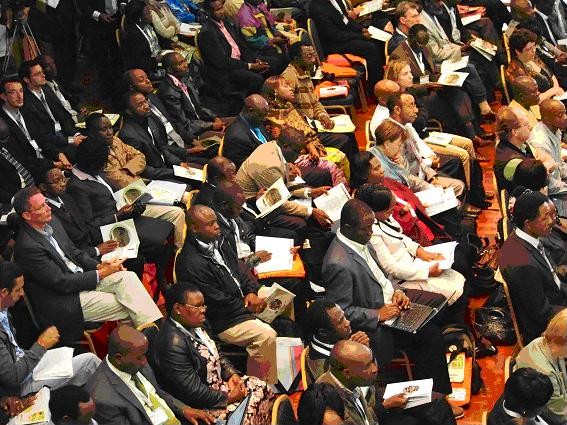
Participants during the opening Plenary Session: Landscape Approaches to Future Forest and Tree Resources
The IUFRO/FORNESSA Regional Congress kicked off at the diverse and scenic World Agroforestry Centre (ICRAF) in Nairobi, Kenya yesterday. This event which runs from the 25th -29th June marks the first Regional Congress in Africa, providing the opportunity for experts focused on Sub-Saharan African forest issues to come together to share and discuss the hot topics surrounding the region’s forests and trees.
The Congress opened with traditional Kenyan singers who performed for the over 300 participants coming from 40 plus African counties and over 50 countries worldwide – the largest gathering of forest experts Africa has ever seen.
The Congress is organized under the theme “Forests and Trees: Serving the People of Africa and the World” and highlights research under the following 6 themes:
1 – Forests and Climate Change
2 – Forests and Water
3 – Forest Policy, Governance and Trade
4 – Forest Biodiversity and Conservation
5 – Agro-forestry, Energy and Food Security
6 – Education, Training and Institutional Capacity Building
Integrated into the Congress is the ITTO/AFF Policy Day taking place on Thursday, June 28th, which focuses on the policy and science interface for sustainable forest management in Africa.
Scientific cooperation plays an important role in the future of African forest science and research and this premiere event serves to act as a catalyst of growth for the FORNESSA network by bridging the geographical barriers and bringing together scientists, researchers, forest managers and policy makers face-to-face- to discuss with their peers issues of paramount importance.
For official coverage of the Congress & photos from the day visit the IISD reporting services homepage at http://www.iisd.ca/ymb/forest/iufrofornessa/c1/.


